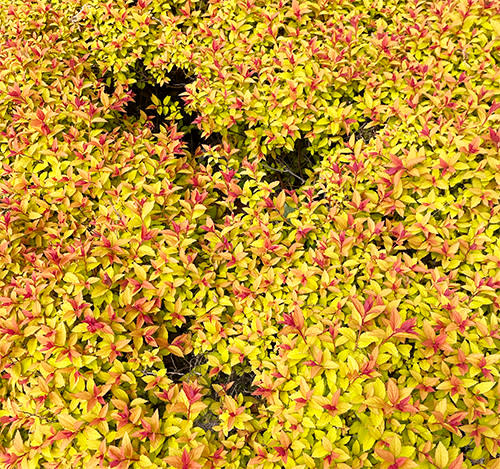

昨日も十勝を弾丸で往復しておりました(ふ〜)。
出張していたカミさんを迎えに行って、いっしょに帰ってくるという行程でしたが、やはり往復400km超はちょっとキツい(笑)。帰りはカミさん主体で運転してくれたのですが、ちょうどダイエットに真剣に取り組んでいるところなので、途中、すこしフラッときたときもあった。
わたしたち年代はモータリゼーションまっ盛りのど真ん中を生きてきた。それこそ幼いときからクルマで走り続けてきた年代なのかも知れません。最近、わたしの文章を見てもらっている方から「スピード感が感じられる」というように言われていましたが、まぁ内容が「軽め」でどんどん空気化している、ということかなと不安でもあったのですが、どうもそういう皮肉ではなくて、速度感が感じられるのだそうです。そうだとすれば、やはり生きてきた「環境」がそのような働きをするものかも知れないと、自分事ながら、すこし頓悟させられた次第。
なんですが、やはり運転はやはり疲れも溜まることなので、一気・長距離というのはセーブしたい。
ただ、クルマで移動しながら外界を見ると、無数の「情報」が伝わっても来る。そういう情報への感受速度というようなものは、現代人が獲得した大きなこころの資産かも知れない。
っていうところですが、このガーデン写真は途中のパーキングのガーデンの様子。いかにもイングリッシュ風というか、日本庭園的ではない。
扱う草花も彼我の違いを表している。
2枚目の植物の群生模様など、ちょっと花鳥風月という感覚とは違いがある。しかし北海道は、こういう植物群生とも相性がいちばん合うように思う。逆に、いわゆる日本庭園的な花鳥風月感は北海道ではあんまり志向性を感じない。たぶん花鳥風月・わび・さび精神が、積雪寒冷という気候風土条件によって、冬期間、回復不能なまでにダメージを受けるので、早々に「諦めた」と思える。
本州の方と話していて、庭園論になったら北海道人は早々に「野外ジンギスカンのよろこび」に話題転換しようとする(笑)、と呆れられた。まことに「花より団子」の空間性志向が北海道人にはある。それとともに箱庭的花鳥風月空間ではぜったいに敵わない「ゆたかな自然」が、はるかに強力にこちらをグリップしてくるのですね。
そういう環境からすると、まだしも欧米風の庭園が似つかわしいのかも知れませんね。
English version⬇
Hokkaido and Western Cultural "Gardens" and Flowers
I mentioned Saigyo-san yesterday, but the theme of the relationship between the great nature of Hokkaido and the sense of "Kacho Fugetsu" (flowers, birds, winds, and the moon) sounds interesting. Where is the post-Hakoniwa aesthetic sensibility headed? ......
Yesterday, I made a round trip to Tokachi and back (phew!).
I picked up my wife, who was on a business trip, and came back together, but it was still a bit tough to drive over 400 km round trip (laugh). On the way back, my wife drove the car mainly, but she is just now seriously working on her diet, so she sometimes felt a little dizzy.
We lived in the middle of the height of motorization in our generation. We may be the generation that has been driving cars since we were very young. Recently, one of my readers commented to me that they could sense a sense of speed in my writing, and I was worried that it might mean that the content was "light" and becoming more and more "airy. If that is the case, then I was a little bit enlightened, even though it was my own experience, that the "environment" in which I have lived may work in such a way.
However, driving is tiring and tiring, so I would like to save it for long distances.
However, when you look at the outside world while moving in a car, countless "information" is transmitted to you. The speed at which we perceive such information may be one of the greatest mental assets that modern people have acquired.
This garden photo is of a garden in a parking lot on the way to the park. It is very English style, not like a Japanese garden.
The plants and flowers used in the garden also show the difference between English and Japanese gardens.
The second photo, showing a grouping of plants, is a little different from the "Kacho Fugetsu" (flowers, birds, winds, and the moon) style. However, Hokkaido seems to be the most suitable place for this kind of plant grouping. On the other hand, the so-called Japanese garden style of Kacho-fu-getsu is not so oriented in Hokkaido. It seems that people in Hokkaido have given up on the "Kacho-fu-getsu" (flower, bird, wind, and the moon) and "Wabi-sabi" (the beauty and simplicity of nature) spirit because they are irreparably damaged during winter due to the cold and snowy climate.
When talking with people from Honshu and getting into a garden argument, Hokkaido people are quick to change the subject to "the joy of outdoor Genghis Khan" (laugh), to my dismay. Hokkaido people have a spatial orientation that is more like "dumplings than flowers. In addition, "abundant nature," which cannot be matched by the boxy garden-like "Kacho-fu-getsu" space, has a much stronger grip on us.
In such an environment, a Western-style garden may still be appropriate.









